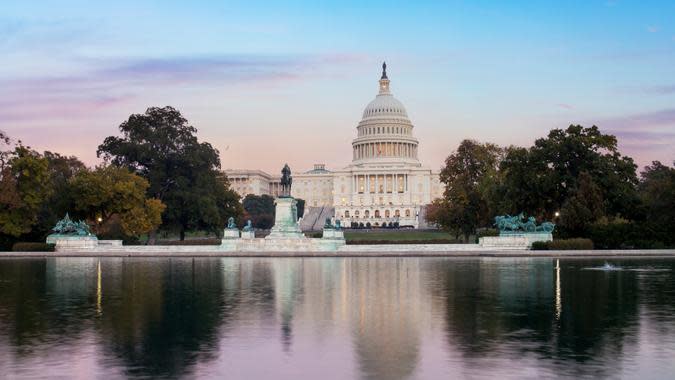Financial Literacy Around the World: Top 10 Countries and the US

Financial literacy is the knowledge and understanding of key financial skills -- from budgeting and saving to investing and retirement planning -- and the ability to put them to use in your life and affairs, according to Investopedia.
Advice: 9 Bills You Should Never Put on Autopay
Check Out: 9 Best Small Business Ideas To Make Money From Home
The more financially literate people become, the better decisions they make, according to a study by Policy Contribution. On the other hand, the less financially literate you are, the easier it is to make poor decisions that contribute negatively to one's well-being and socio-economic status.
Of course, financial literacy is not a level playing field. People earning lower incomes tend to be less financially literate, and people earning higher incomes tend to have greater financially literacy -- but that's not all. There seems to be a pretty big discrepancy regarding financial literally based on geographical location, too.

1. Denmark: 71% (tie)
The European country of Denmark is tied for the number one spot with Norway and Sweden, with 71% financial literacy. In general, according to Tell Us, though there is high consumer debt, Danish households generally tend to have large assets. Danish employees also receive pension plans of around 10-15% of their income, with compounding interest, and so they are already geared to think about their future finances.
Additionally, financial education is mandatory for 7th through 9th grade students. Danish adolescents participate in an annual event called Global Money Week, where financial professionals come and speak to local schools for children ages 13 to 15, organized by Finance Denmark and the Danish Union of Teachers of Mathematics.
POLL: How Much Do You Expect Your Tax Refund To Be This Year?

1. Norway: 71% (tie)
Northern European countries, in general, have the highest financial literacy. Norway's 71% financial literacy may have to do with the fact that youth receive financial education through programs that are funded by the national bank, according to Tell Us.
These programs offer interactive learning materials on topics of personal finance with the goal of helping them buy homes and other financial milestones.

1. Sweden: 71% (tie)
Sweden, like its neighbors in Norway and Denmark, has 71% financial literacy that may have its roots as far back as the late 1800s. The school savings movement was introduced in Europe by French economist Augustin Chaurand de Malarce in 1873, who was inspired by the Vienna World Exhibition, according to the Swedish Royal Institute of Technology.
By 1901, the Swedish Savings Bank Association started a campaign to promote financial literacy in schools. Today, students are taught financial concepts, numeracy, and life skills such as how to save for a pension and how to buy a house.

4. Canada: 68% (tie)
Canada made a concerted effort to address declining financial literacy by instituting The National Research Plan for Financial Literacy. This program engages public, private and non-profit sectors to improve financial literacy. With a financial literacy rate of 68%, it must be working.
The goals are to get Canadians to manage money and debt; save and plan for the future; and prevent and protect against fraud and financial abuse.

4. Israel: 68% (tie)
Israel also weighs in high with 68% literacy, though these numbers vary among different groups of people. For example, according to The Forward, men are more financially literate than women (72% of men, 64% of women).
Socioeconomic factors also play into financial literacy. The richest 60% of Israelis had 72% financial literacy, but the poorest 40% were only 63% financially literate. According to one of the S&P's financial literacy study's authors, there is "a positive relationship between financial literacy and borrowing formally."
The formal borrowers in Israel had a financial literacy rate of 73%, compared to 65% of those who did not. Additionally, Israel educates its high schoolers with "Financial Education Month in the School System," introducing financial concepts such as: banking, investment and general economics, in partnership between the Education Ministry and the Bank of Israel.

6. United Kingdom: 67%
The UK may have a 67% financial literacy, but it still sees gaps and has been working to change that. In 2014, it mandated personal finance instruction in schools.
Related: Which Financial Topics Should Be Taught in School, According to Financial Advisors

7. Germany: 66%
Germany takes its financial literacy quite seriously, according to Trimplement. With 66% financial literacy, Germans understand that financial literacy has a direct link to the financial well-being of society and individuals.
Germans also have a strong pension system that covers all private and public employees. Men were slightly more financially literate than women, and those with less education in general also had lower financial education, pointing out clear socioeconomic inequities.

8. Netherlands: 66%
According to Tell Us, the Dutch government believes strongly in educating and empowering consumers with financial knowledge. They have passed many laws that help inform consumers about their decisions and combat debt, which may account for their above average financial literacy rate.

9. Australia: 64%
Australia has a lot of socioeconomic discrepancies and has worked to improve financial literacy among younger people by including financial literacy in primary and secondary education. According to the Organization for Economic Cooperation and Development (OECD), Australian students score above the average of the top 10 financially literate countries.
Seventy-nine percent of 15-year-old students in Australia have a bank account, as well, and these kids score higher in financial literacy than their peers who don't have bank accounts. In 2012, the Australian Securities and Investments Commission introduced the MoneySmart Teaching program, which includes financial literacy for teachers.

10. Finland: 63%
Finland also prioritizes educating students in financial literacy. Finnish students receive some financial education during mathematics and home economics in Grade 7, and a further class in financial literacy during their social science studies in Grade 9.
According to a study in the journal "Large Scale Assessments in Education," students from Australia (as well as Indonesia, the Russian Federation, and Finland) reported having the greatest number of financial literacy tasks in school.

United States
Though the country is large and has many resources, sadly, the U.S. does not rank well in financial literacy. It's at 57% and even that varies from state to state. According to the Milken Institute's "Financial Literacy in the United States" report, "many US adults lack the basic knowledge and skills required to engage in sound financial decision-making."
Additionally, according to Tell Us, only 25 states offer mandated economics courses that are required to graduate, and only 6 require personal finance classes, even though students who take these classes are shown to handle their college and credit card debts with greater responsibility.

Final Thoughts
While individual countries may show high financial literacy, these rates can vary among socio-economic groups, and often reveal inequities and disparities. The United States has a long way to go to improve its financial literacy, but may benefit from taking advantage of emerging financial technologies, particularly for younger generations, according to the Milken Institute.
Much of the research cited here shows that the earlier financial education is introduced to youth, the better prepared they will be to handle their finances with responsibility as adults.
More From GOBankingRates
This article originally appeared on GOBankingRates.com: Financial Literacy Around the World: Top 10 Countries and the US

 generic
generic 